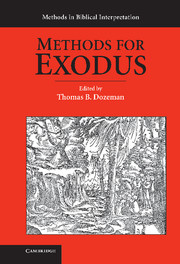Preface: Methods in Biblical Interpretation
Published online by Cambridge University Press: 05 June 2012
Summary
BACKGROUND
From the mid-nineteenth century until the 1980s, the historical-critical method dominated the study of the Hebrew Bible and New Testament. A legacy of J. P. Gabler, Friedrich Schleiermacher, Julius Wellhausen, and their immediate intellectual heirs as well as of philologists studying nonbiblical ancient texts, the historical-critical method can best be understood as an unproblematic quest for the provenance of scripture. A product of Enlightenment thinking, it attempts to find the “true,” original political and social contexts in which the Bible was created, redacted, and first heard and read.
The “linguistic turn” – or, the use-and-abuse of different critical theoretical approaches to texts – was relatively late coming in the scholarly interpretation of the Bible. When, in the 1970s, biblical scholars began experimenting with methodologies borrowed from philosophy, anthropology, and literary studies, the results were at times creative and invigorating, as theoreticians demonstrated how biblical texts could yield new ethical, political, aesthetic, and theological meanings. Sometimes, valuable older interpretations that had been effaced for many years by historical-critical concerns were recovered. Frequently, however, the results also could be painfully derivative and the authors' motivations transparent. Students' and scholars' strange vocabulary and obfuscations couldn't hide unexamined political and theological (or antitheological) commitments.
Information
- Type
- Chapter
- Information
- Methods for Exodus , pp. xi - xivPublisher: Cambridge University PressPrint publication year: 2010
